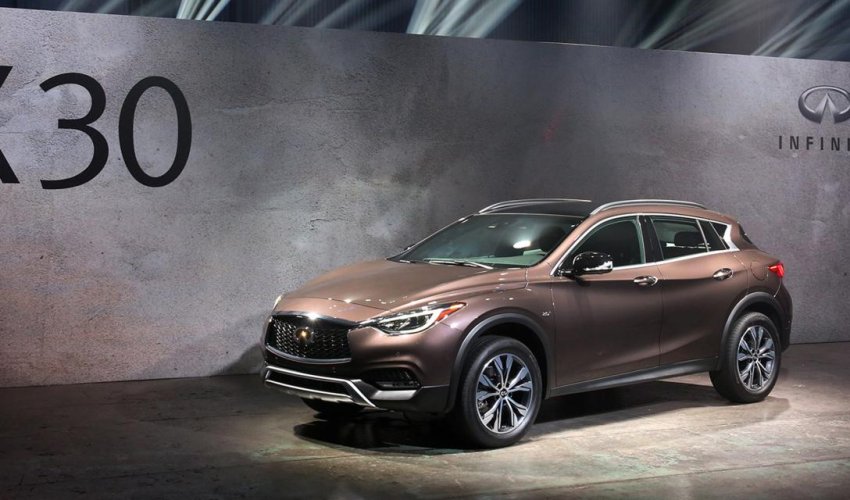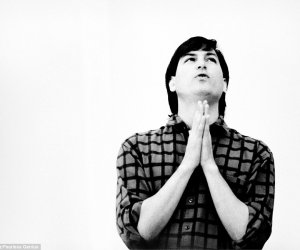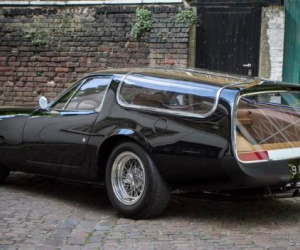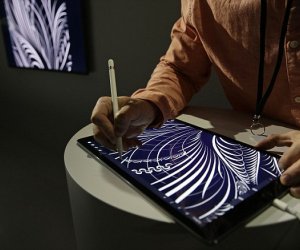Infiniti's stylish utility vehicle

Infiniti's QX30 Concept debuted at this year's Geneva Motor Show and bore such a strong resemblance to the Q30 Concept hatchback of 2013, many onlookers had to check their glasses. The more remarkable bit is that the QX30 is all at once edgy, elegant and proportional. Everything the awkward Lexus NX models and even Mercedes' GLA are not. Where the Lexus cuts disruptive gashes across its shoulders and flanks, the Infiniti's creases and peaks actually lead somewhere logical. The QX30's design paints ocean waves rushing elegantly ashore where the NX evokes a Category 5 hurricane causing civilian damage.
From a practical standpoint, the QX30 compact SUV will provide two extra inches of ground clearance than the Q30. Touchscreen navigation, self-parking assist, adaptive cruise control a 360-degree camera system will be standard. Nappa leather will be optional and Infiniti states the QX30 will be one of the quietest vehicles in its segment. Under the QX30's skin, you'll find the guts of another entry-luxury mount, but an unexpected one: Mercedes' CLA. Mercedes and Infiniti struck a content-sharing agreement that provides Infiniti use of Mercedes' 2-litre turbocharged four-cylinder drivetrain and CLA/GLA chassis.
Infiniti expects a lot from the QX30, with growth in the compact SUV market pegging the virtual sales tachometer from every corner of the globe. It will also provide an affordable point of entry into Infiniti's vast SUV range and taking on other luxury entries like BMW's X1 and Audi's Q3.
We sat down at the Los Angeles International Auto Show with Infiniti's head of design, Alfonso Albaisa and the lead designer on the QX30, Hirohisa Ono.
"The most important part of the QX30 is a strong, sharp character line that sweeps all the way from the front, along the side and through to the rear," says Ono. "It's very three-dimensional. This also represents not just a design strength, but a challenge on the engineering side in stamping to the door skins. It's a sharp angle, but must be executed smoothly. A scoop in the sheetmetal for the door handles presents another challenge; most cars have handles placed below any such creases.
Infiniti's signature "crescent cut" transition from rear door frame and glass to the C pillar and the QX30 is no exception. It strikes our eyes as somewhat French, but Ono says that is not intentional.
At the rear, two character lines that waft across the tailgate begin by visually supporting the taillamps at the sides and meet in a high shelf in the middle. At the same time, Ono is able to create an exaggerated feeling of width by blacking out the bodywork under the rear window, rather than continuing it in body color. A subtle but effective approach.
At the front, by using the now-familiar double-arch Infiniti grille shape, Ono rendered the front end more smoothly and with a lot less surface noise than other recent Infiniti models, making the overall impression daring, exciting, yet markedly more harmonic than others in the segment, including Mercedes' own GLA, on which the QX30 is based.
The QX30 being such a tidy, elegant execution in the hard-fought and globally-growing compact SUV segment, we then sat exclusively with Infiniti's overall head of design, Alfonso Albaisa.
"Artistically, the beginnings of our cars have been disruptive and spontaneous, but we've tried to prevent them from being odd or contradictory," says Albaisa. "We hope to achieve a silky beauty."
We asked Albaisa how he approaches any new design challenge, such as a new compact SUV.
"Infiniti design is not about shocking the status quo. I prefer the old Carrozzeria method where the designer was also the engineer. The classic 1950s and 1960s Italian masters produced cars this way, and the true beauty of the initial dream came through in metal and glass."
As the overall manager of a group of designers from different backgrounds around the world, Albaisa's biggest self-imposed task is pulling people's own character and identity out of them into their designs.
"Meeting a person is not meeting that person's insides," he suggests. "You need to probe deeper and see it in the drawings. The conflict, the chaos plus the harmony and the emotion. A car is made by people and the fingerprint of the artist must be in each one."
"We at Infiniti design are not classicists like Mercedes and BMW; they do that perfectly. We’re different. Because of this, when we make a car with Mercedes like the QX30, the tonality must be purely Infiniti. The personal fingerprint of the designer is tangible, where at Mercedes, the designer has this rich history and evolution of design over many more years that should and must inform the design."
Albaisa says he has always felt like Infiniti has been a black sheep. The past couple of generations of Infinitis have had a darkness, he says; a sense of turmoil or moodiness. "And Infiniti can have this artistic view and feel because all the way from the top, our leader Carlos Ghosn never wanted it to be a 'me-too' company. The car we make must represent something unique. An added value. And he's always championed this notion that we’re an artisan, design-focused brand where that discipline takes a lead role.
"I love the relationship between design and engineering," says Albaisa. "I'm reluctant to separate the engineer and designer because for me, so many truly successful designs were born from both disciplines either working well together or from both coming out of the same individual.
As for the QX30, it will launch in the spring of 2016 globally (carrying base price of roughly $30,000 in the US market), all of them being built in Sunderland, England, itself a first for Infiniti.
(BBC)







www.ann.az
Similar news
Similar news




































 Photo
Photo 



 Video
Video 

